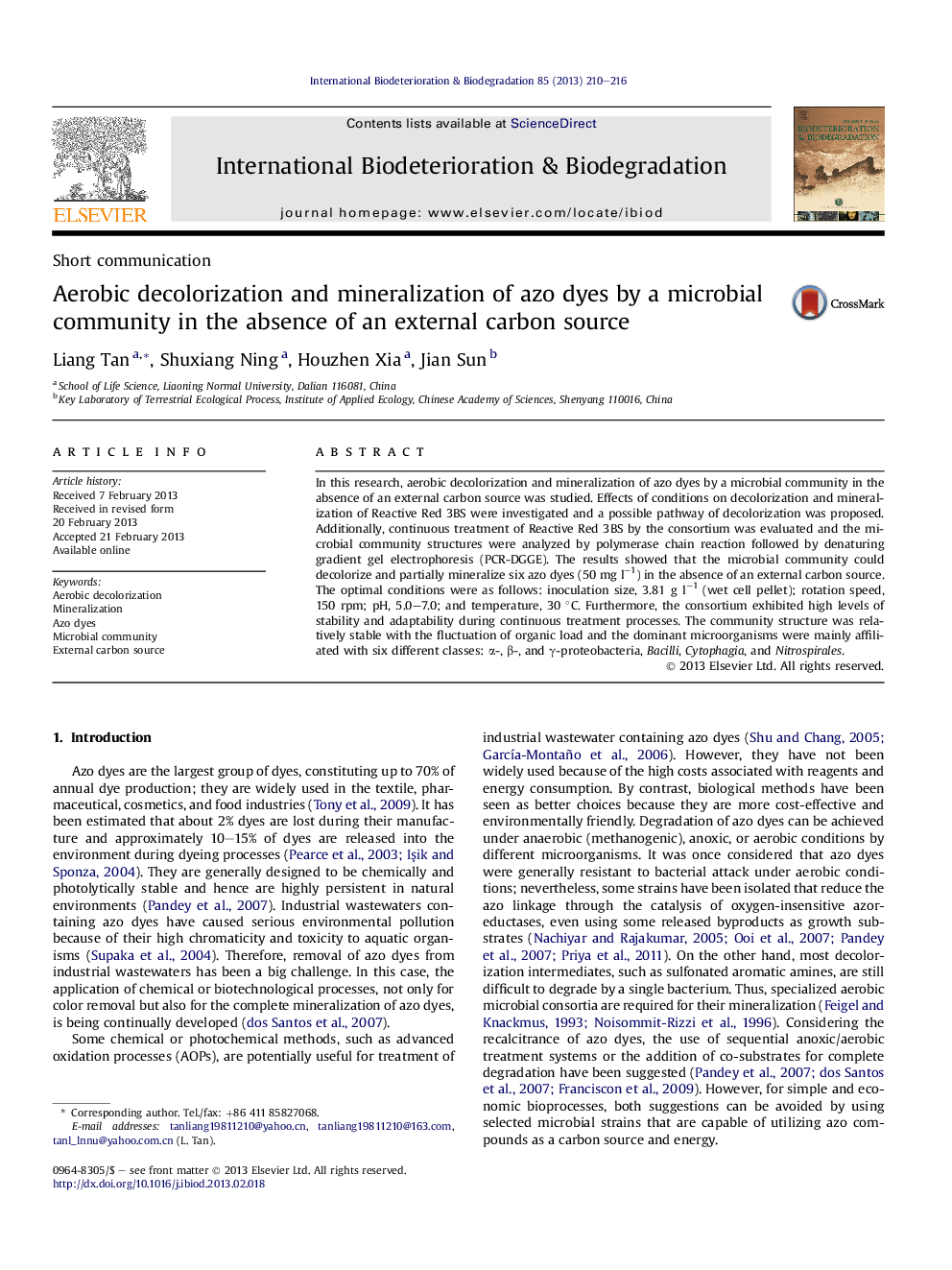| Article ID | Journal | Published Year | Pages | File Type |
|---|---|---|---|---|
| 6289295 | International Biodeterioration & Biodegradation | 2013 | 7 Pages |
Abstract
In this research, aerobic decolorization and mineralization of azo dyes by a microbial community in the absence of an external carbon source was studied. Effects of conditions on decolorization and mineralization of Reactive Red 3BS were investigated and a possible pathway of decolorization was proposed. Additionally, continuous treatment of Reactive Red 3BS by the consortium was evaluated and the microbial community structures were analyzed by polymerase chain reaction followed by denaturing gradient gel electrophoresis (PCR-DGGE). The results showed that the microbial community could decolorize and partially mineralize six azo dyes (50 mg lâ1) in the absence of an external carbon source. The optimal conditions were as follows: inoculation size, 3.81 g lâ1 (wet cell pellet); rotation speed, 150 rpm; pH, 5.0-7.0; and temperature, 30 °C. Furthermore, the consortium exhibited high levels of stability and adaptability during continuous treatment processes. The community structure was relatively stable with the fluctuation of organic load and the dominant microorganisms were mainly affiliated with six different classes: α-, β-, and γ-proteobacteria, Bacilli, Cytophagia, and Nitrospirales.
Related Topics
Life Sciences
Environmental Science
Environmental Science (General)
Authors
Liang Tan, Shuxiang Ning, Houzhen Xia, Jian Sun,
